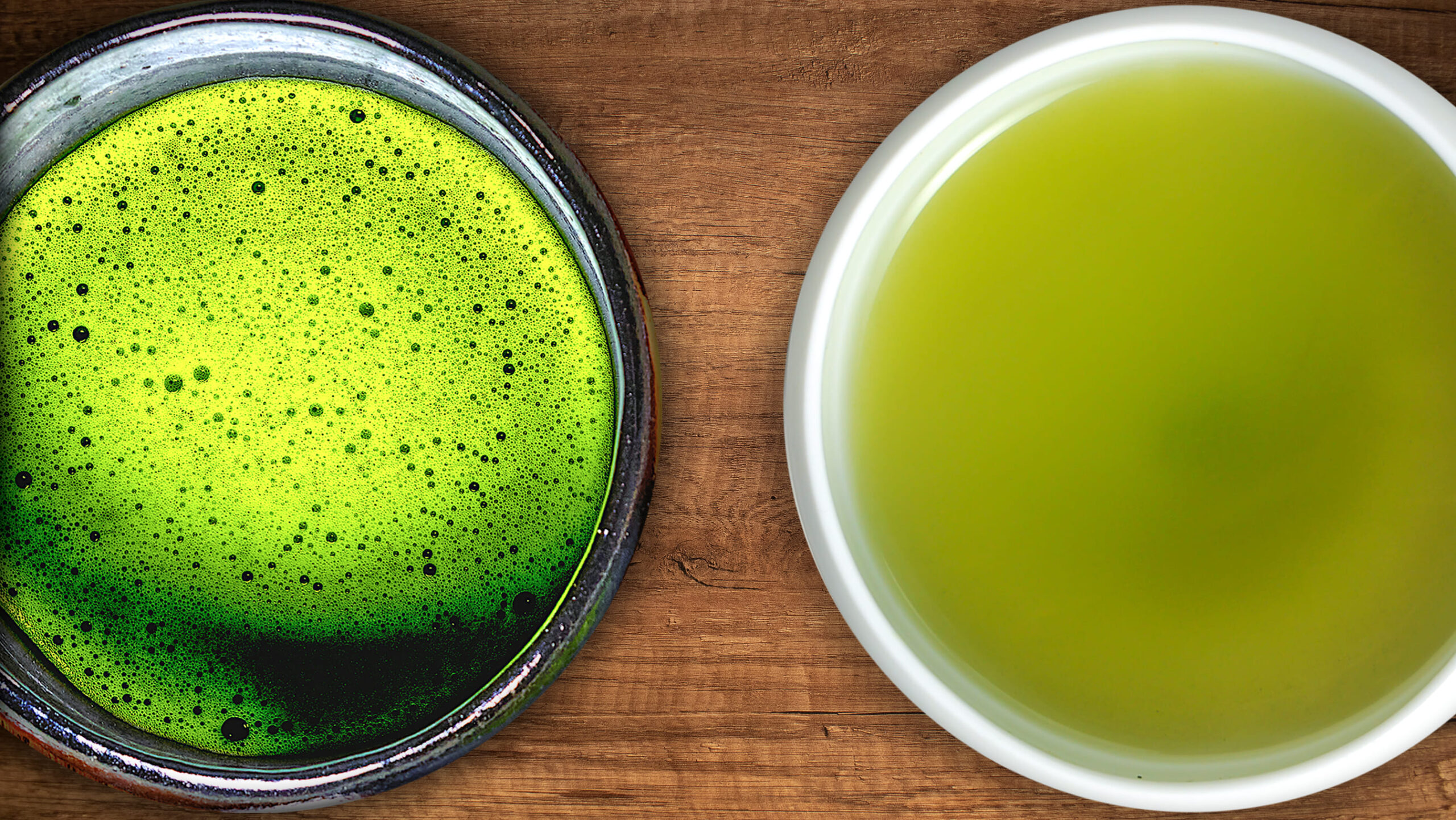


Japanese green tea is well known for its wide variety of health benefits, and two of the most popular types are Matcha and Sencha. While both come from the same tea plant, they differ significantly in production, flavor, and use. For businesses looking to incorporate green tea into their products, understanding these differences is crucial to choosing the right tea that aligns with your business goals.
Matcha is a powdered green tea made from shade-grown tea leaves. The leaves are harvested, steamed, dried, and then ground into a fine powder. This process results in a vibrant green tea packed with antioxidants, amino acids, and caffeine. Unlike other teas, when you consume Matcha, you’re drinking the whole tea leaf, making it more potent in nutrients.
For a deeper dive into the benefits of Matcha, check out our post Matcha Magic: 6 Transformative Health Benefits of Japan’s Green Wonder.

Sencha is the most commonly consumed green tea in Japan. The tea leaves are grown in direct sunlight, and after harvesting, they are steamed, rolled, and dried. Sencha has a refreshing, grassy flavor and is known for its lighter and slightly astringent taste compared to Matcha.
To explore more about the health advantages of Sencha, check out our blog post Sencha: The Green Tea Powerhouse – Unveiling Its Distinct Health Advantages.

| Aspect | Matcha | Sencha |
| Growing Process | Grown in the shade | Grown in direct sunlight |
| For | Fine powdered tea | Whole tea leaves |
| Caffeine Conten | High | Lower |
| Flavo | Rich, umami, slightly sweet | Grassy, fresh, slightly bitter |
| Color | Bright green | Light green with yellow hue |
Whether you’re in the food and beverage industry or wellness space, both Matcha and Sencha offer distinct benefits for your business. Here’s how to decide which is the best fit:

For more on how Matcha can benefit your food and beverage business, you might enjoy our post High-Quality Hojicha for Food and Beverage Development: Unlocking New Possibilities—which also touches on the role of Japanese teas in product development.

For a closer look at how Japanese teas like Sencha are shaping the beverage industry, take a look at our article Trends in Tea: How Japanese Green Tea is Shaping the Food and Beverage Industries.
Both Matcha and Sencha have versatile uses across various product categories. Matcha is ideal for baked goods, smoothies, and premium beverages, while Sencha is perfect for ready-to-drink teas, everyday tea bags, and wellness products.
By understanding the unique qualities of both teas, you can select the one that aligns with your product vision, customer preferences, and market trends.

As green tea continues to rise in popularity, incorporating the right type of tea—whether Matcha or Sencha—into your business products can set you apart from competitors. Both teas bring unique flavors, health benefits, and versatility, allowing you to cater to a range of consumers from wellness-focused individuals to casual tea drinkers.
Are you ready to add Matcha or Sencha to your products? Contact us at Kametani to learn more about our high-quality green tea supply and how we can help you find the perfect match for your business needs.